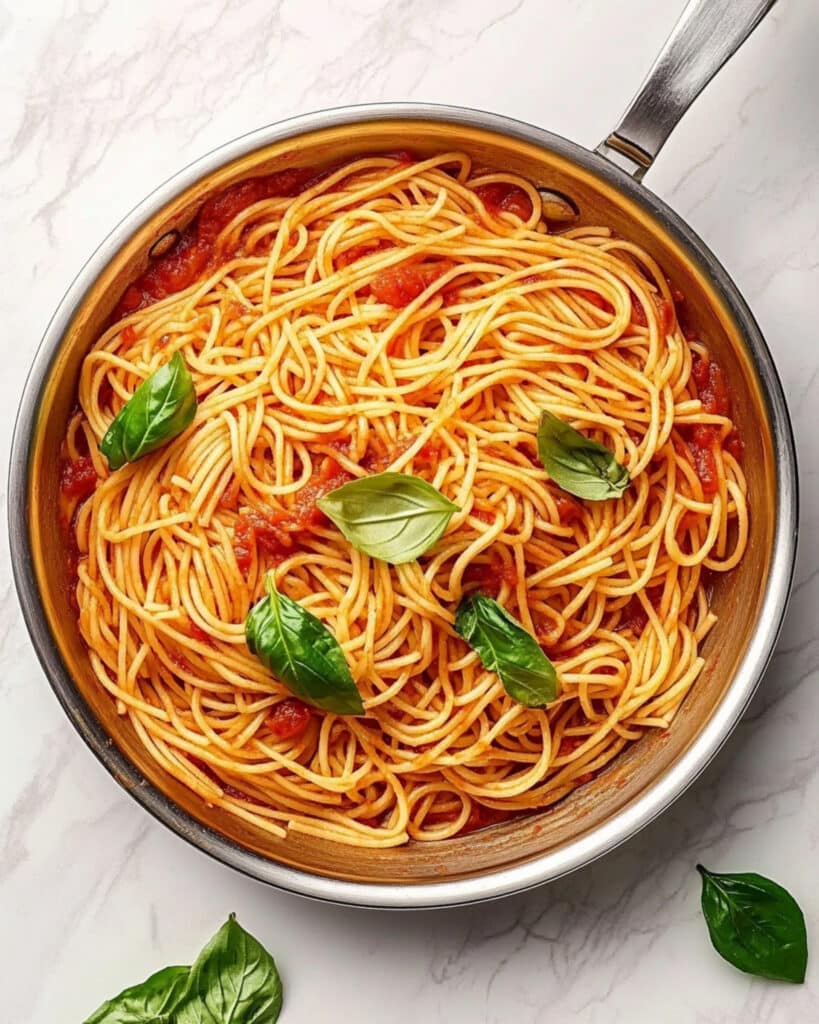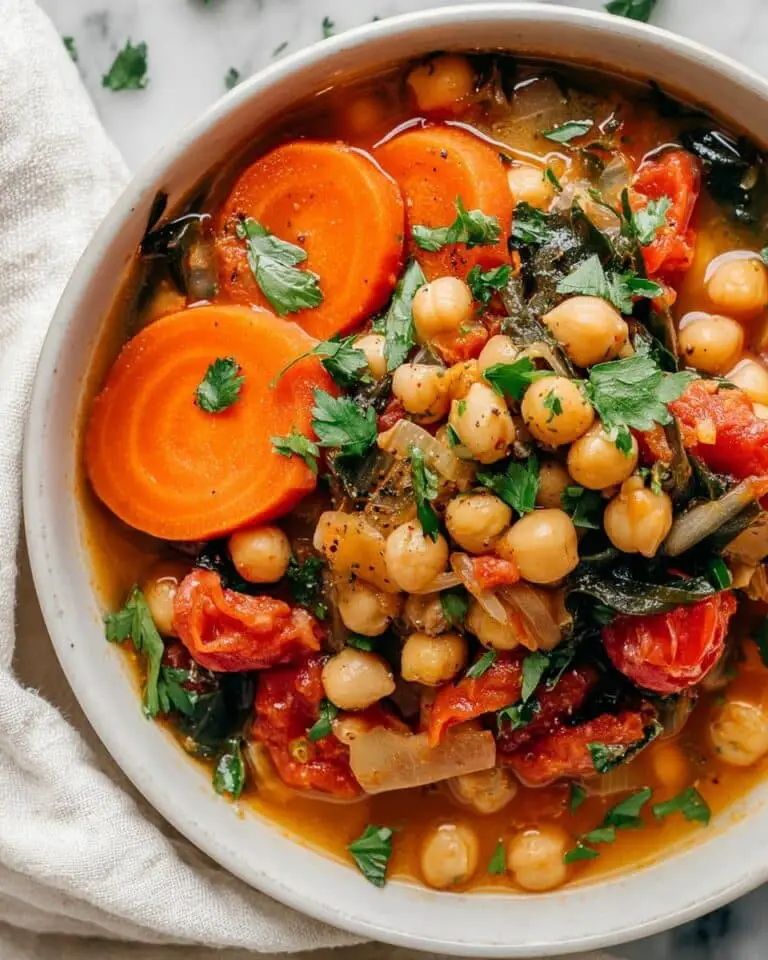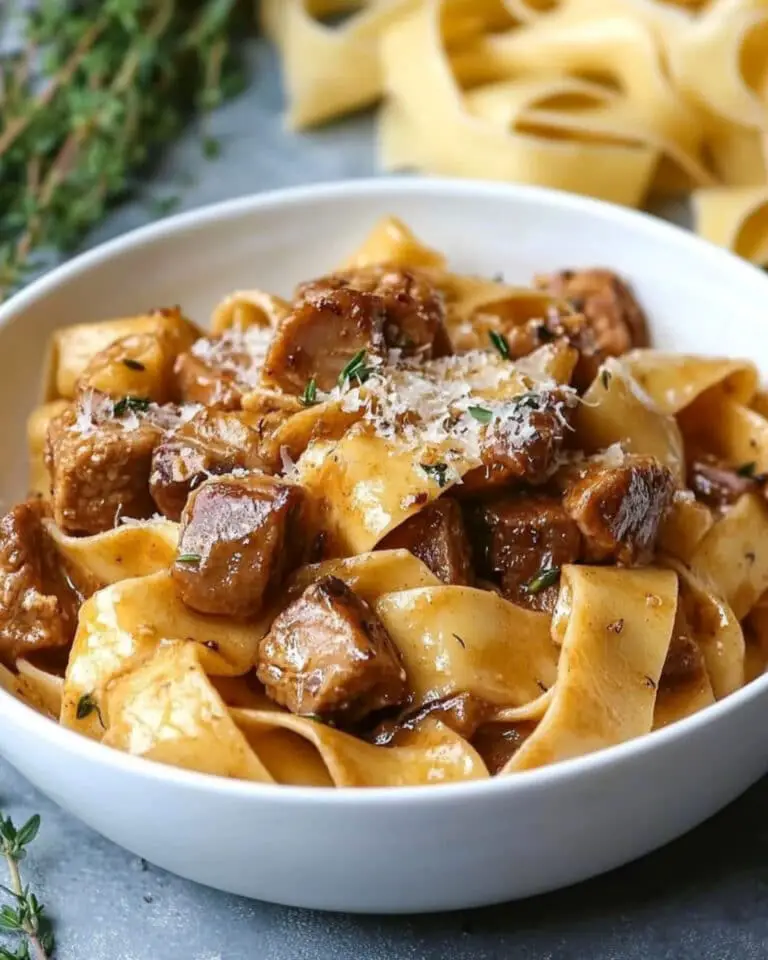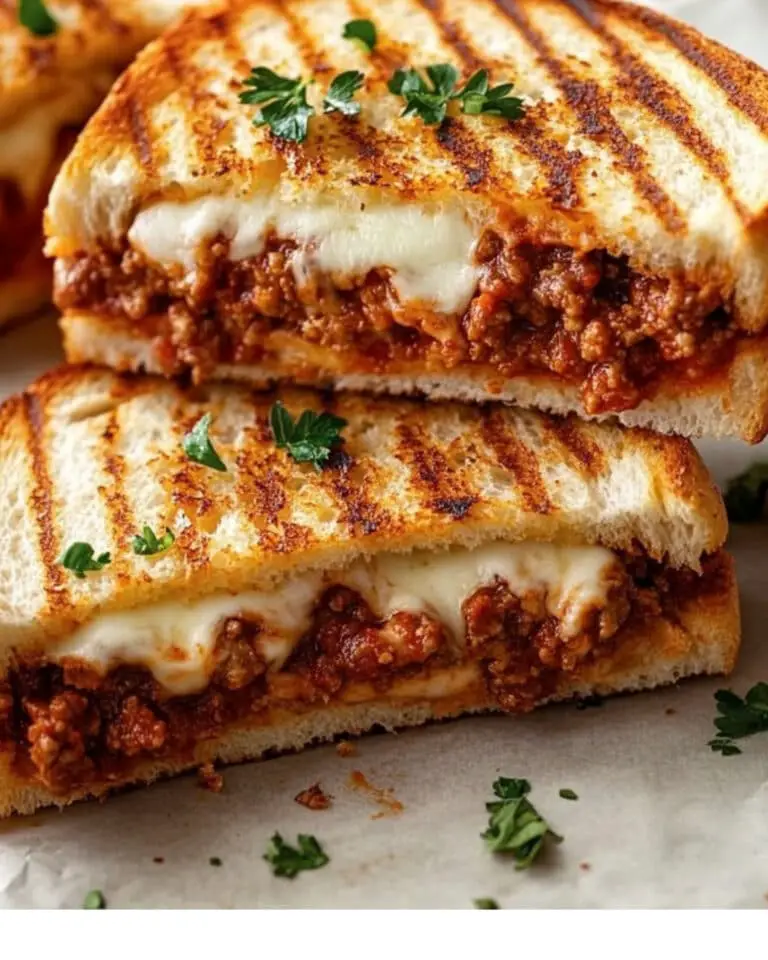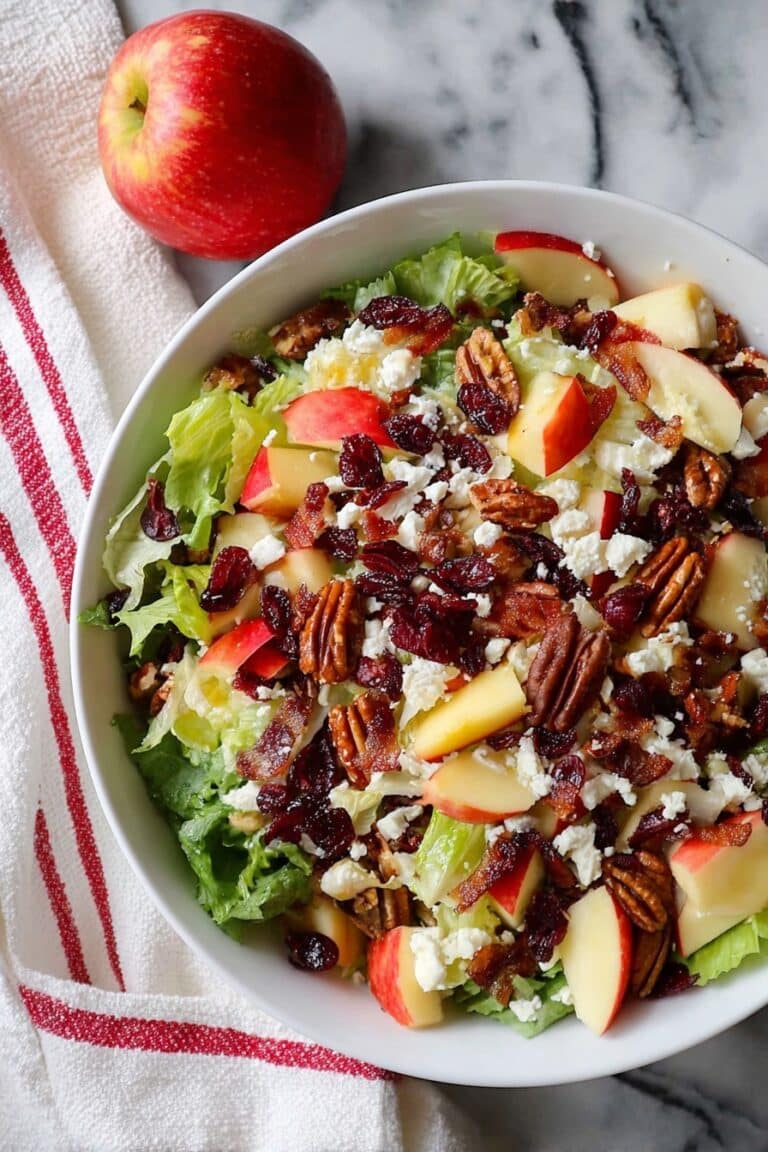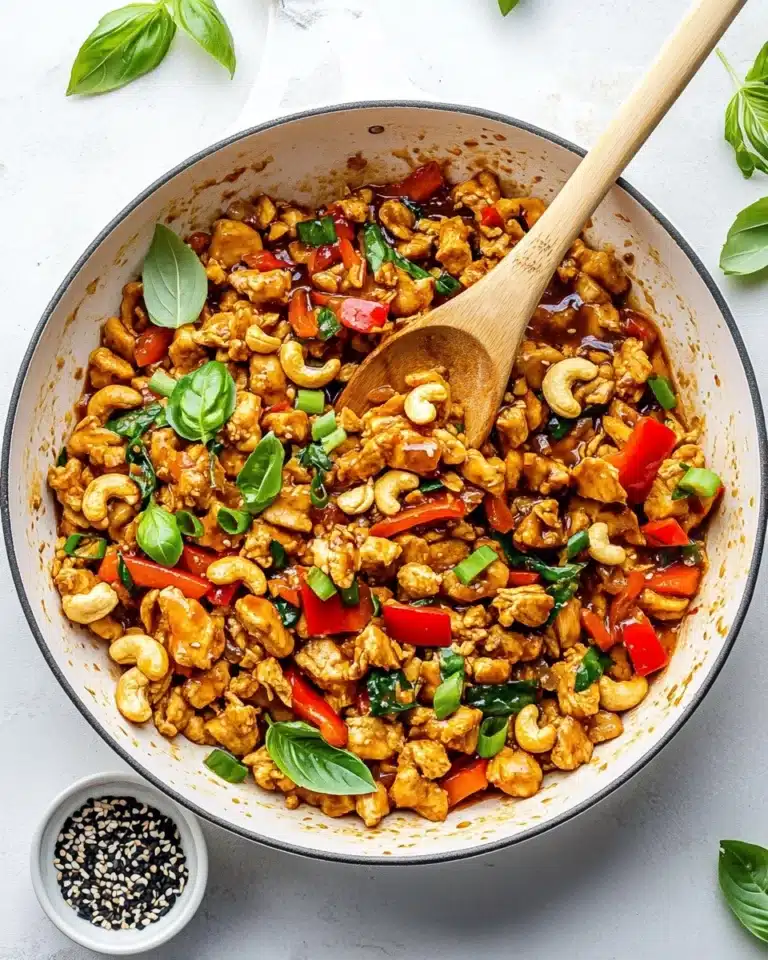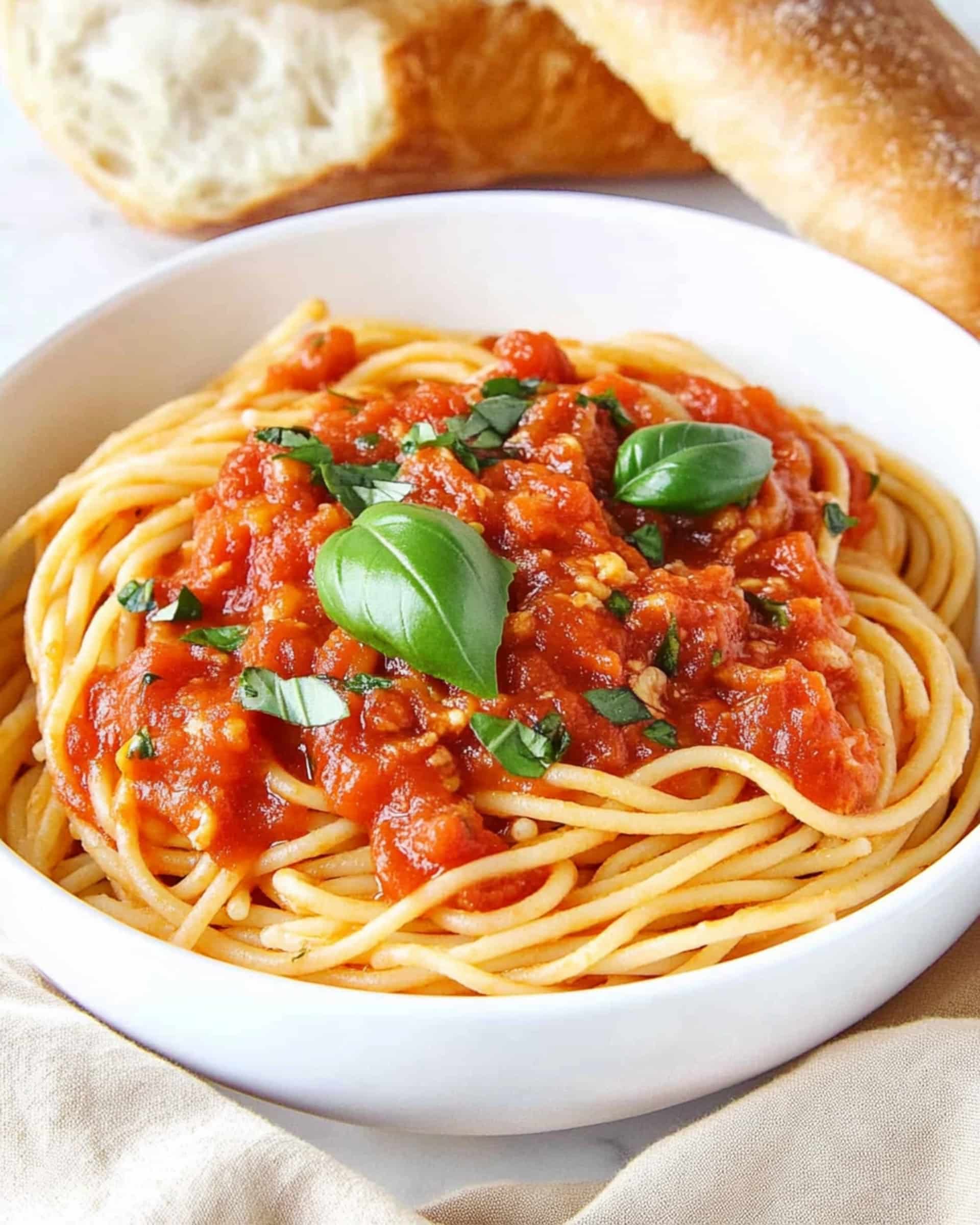
This mouthwatering Pasta Pomodoro transforms simple ingredients into a restaurant-worthy dish that sings with authentic Italian flavors. The silky tomato sauce, perfectly balanced with fresh basil and Parmesan, comes together in just 25 minutes – making it your new secret weapon for those hectic weeknights when you crave something delicious without spending hours in the kitchen.
Why You’ll Love This Recipe
- Incredibly Simple: With just a handful of everyday ingredients, this pasta dish delivers maximum flavor with minimal effort.
- Quick Preparation: The entire dish comes together in under 30 minutes, perfect for busy weeknights when you’re craving something homemade but short on time.
- Authentically Italian: This classic pomodoro sauce captures the essence of Italian cooking – simple ingredients treated with respect to create something truly magnificent.
- Versatile Base: Once you master this recipe, you can easily customize it with add-ins like grilled chicken, shrimp, or roasted vegetables to suit your preferences.
Ingredients You’ll Need
- Whole Peeled Tomatoes: The star of the show! Canned tomatoes actually work better than fresh in this recipe, as they’re picked and processed at peak ripeness. San Marzano tomatoes will give you the richest flavor, but any good-quality canned tomatoes will work beautifully.
- Extra Virgin Olive Oil: Don’t skimp here – the olive oil contributes significantly to the flavor profile. Use the best quality you can afford for that authentic Italian taste.
- White Onion: Creates the aromatic foundation of the sauce. Finely dice it for the best texture and even cooking.
- Garlic: Brings essential pungency and depth. Fresh is non-negotiable here – pre-minced simply won’t deliver the same bright flavor.
- Crushed Red Pepper Flakes: Adds a gentle warmth rather than overwhelming heat. Adjust to your preference, but even a small amount enhances the overall flavor.
- Salt: Enhances all the other flavors. Remember, you’ll also be salting your pasta water, so be mindful not to over-salt your sauce.
- Spaghetti: The traditional choice, but any long pasta works wonderfully. The sauce clings beautifully to long strands.
- Butter: My secret weapon! Just a small amount adds incredible richness and helps the sauce coat the pasta perfectly.
- Parmesan Cheese: Freshly grated is absolutely essential – the pre-grated stuff simply doesn’t compare in flavor or melting quality.
- Fresh Basil: Adds that distinctive sweet, peppery brightness that defines Italian cooking. Add it at the end to preserve its vibrant flavor and color.
Note: You’ll find the complete list of ingredients, along with their exact measurements, in the printable recipe card at the bottom of this post.
Variations
Want to switch things up? Here are some delicious ways to make this recipe your own:
- Protein Additions: Toss in some grilled chicken, sautéed shrimp, or Italian sausage for a heartier meal.
- Veggie Boost: Add sautéed mushrooms, bell peppers, or spinach for extra nutrition and flavor.
- Spice Level: Increase the red pepper flakes for a fiery version, or add a splash of vodka before simmering the sauce for a modern twist.
- Creamy Version: Stir in a splash of heavy cream at the end for a luxurious rosa sauce.
- Different Pasta: Try penne, rigatoni or fettuccine instead of spaghetti – each offers a slightly different eating experience.
How to Make Pasta Pomodoro
Step 1: Prepare the Tomato Sauce Base
Place your canned tomatoes in a blender or food processor and blend until smooth. This creates the silky base for your sauce without any chunky bits.
Step 2: Build the Flavor Foundation
Heat olive oil in a large skillet over medium-high heat. Add the finely diced onion and sauté for 5-7 minutes until soft and translucent. This slow cooking develops sweetness and depth. Then add the minced garlic and red pepper flakes, cooking for just one minute until fragrant. Be careful not to burn the garlic, as it will become bitter.
Step 3: Simmer the Sauce
Pour in your pureed tomatoes and season with salt. Bring the mixture to a gentle simmer, then reduce the heat slightly and let it cook for 10 minutes. This allows the flavors to meld and the sauce to thicken slightly.
Step 4: Cook the Pasta
While your sauce simmers, bring a large pot of generously salted water to a boil. Cook your spaghetti according to the package directions until al dente – tender but still with a slight bite. Reserve about 1/2 cup of pasta water before draining.
Step 5: Marry the Pasta with the Sauce
Add your drained pasta directly to the sauce and toss thoroughly to coat each strand. Add the butter and Parmesan cheese, tossing until the butter melts completely and creates a silky texture. If the sauce seems too thick, add a splash of the reserved pasta water.
Step 6: Finish and Serve
Remove from heat and sprinkle with fresh chopped basil. Serve immediately with additional Parmesan cheese on the side.
Pro Tips for Making the Recipe
- Salt Your Pasta Water: It should taste like the sea – this is your only chance to season the pasta itself.
- Reserve Pasta Water: This starchy liquid is liquid gold for adjusting your sauce consistency and helping the sauce cling to the pasta.
- Don’t Overcook the Pasta: Aim for al dente, as it will continue cooking slightly when added to the hot sauce.
- Finish Cooking in the Sauce: Adding the pasta directly to the sauce allows it to absorb flavors and create a more cohesive dish.
- Use a Large Skillet: Having enough space to properly toss the pasta with the sauce makes a huge difference in even coating.
How to Serve
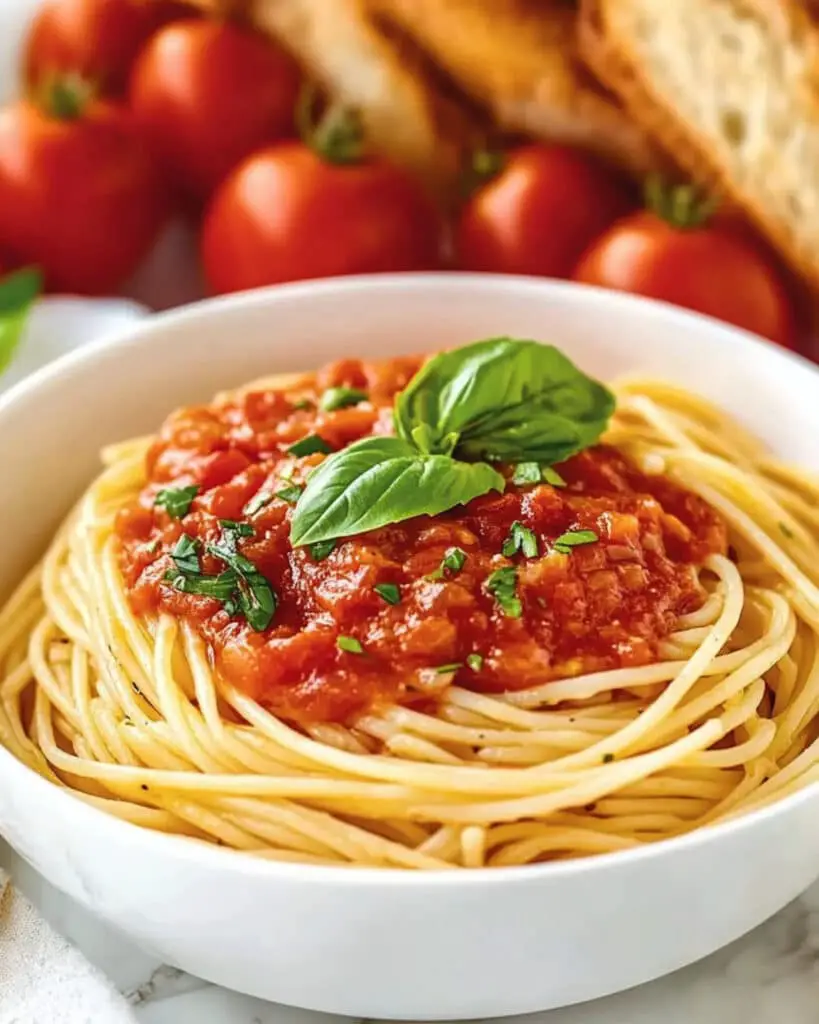
Pasta Pomodoro is a stunning centerpiece that needs little embellishment, but here are some serving suggestions to complete your meal:
Simple Accompaniments
Serve with a crisp green salad dressed simply with olive oil and lemon, or some garlic bread to mop up extra sauce.
Wine Pairing
A medium-bodied Italian red like Chianti or Montepulciano complements the tomato-based sauce perfectly. For white wine lovers, a crisp Pinot Grigio works wonderfully.
Final Touch
A small drizzle of your best olive oil and an extra sprinkle of freshly grated Parmesan just before serving elevates the dish to restaurant quality.
Make Ahead and Storage
Storing Leftovers
Store any leftover pasta in an airtight container in the refrigerator for up to 3 days. The flavors often deepen overnight, making for a delicious next-day lunch.
Freezing
While you can freeze the sauce separately for up to 3 months, I don’t recommend freezing the finished pasta dish as the texture suffers significantly.
Reheating
To reheat, add a splash of water to prevent dryness and warm gently in a skillet over medium-low heat. Alternatively, microwave covered with a damp paper towel, stopping to stir halfway through.
For best results, you can make the sauce up to 2 days ahead and store refrigerated, then cook fresh pasta when ready to serve.
FAQs
-
Can I use fresh tomatoes instead of canned?
You can, but it’s more work for potentially less consistent results. If using fresh tomatoes, you’ll need about 2 pounds. Blanch them in boiling water, peel, seed, and then puree. Canned tomatoes are actually preferred here as they’re processed at peak ripeness and provide reliable flavor year-round.
-
Why add butter to tomato sauce?
Butter creates magic in tomato sauce! It adds richness, helps emulsify the sauce for better coating of the pasta, and smooths out the acidity of the tomatoes. Even this small amount makes a noticeable difference in the final dish.
-
Can I make this recipe vegan?
Absolutely! Simply omit the butter and Parmesan or substitute with plant-based alternatives. Nutritional yeast can provide a similar savory note to replace the Parmesan.
-
My sauce is too acidic. How can I fix it?
If your tomatoes are particularly acidic, try adding a pinch of sugar to balance the flavors. The butter also helps mellow acidity, so you might add an extra teaspoon if needed. Never add baking soda as some suggest – it ruins the texture of tomato sauce.
Final Thoughts
This Pasta Pomodoro recipe proves that extraordinary flavor doesn’t require extraordinary effort. With just a handful of quality ingredients and 25 minutes of your time, you can create a dish that transports you straight to an Italian trattoria. It’s become my go-to for those evenings when I want something comforting yet impressive without the fuss. Give this recipe a try – I’m confident it will earn a permanent spot in your weeknight dinner rotation!
Print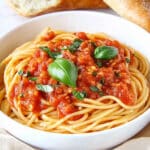
Classic Pasta Pomodoro Recipe
- Prep Time: 5 minutes
- Cook Time: 20 minutes
- Total Time: 25 minutes
- Yield: 4 servings
- Category: Main-course
- Method: Stovetop
- Cuisine: Italian
Description
Pasta Pomodoro is a delicious and quick classic Italian dish that combines tender spaghetti with a rich, flavorful tomato sauce. This recipe is perfect for a weeknight dinner or any occasion when you crave a comforting, homemade pasta meal. It’s topped with freshly grated parmesan and fragrant basil for an irresistible finish.
Ingredients
For the Sauce:
- 1 (28 ounce) can whole peeled tomatoes
- 3 tablespoons extra virgin olive oil
- 1 white onion, finely diced
- 5 cloves minced garlic
- 1/4 teaspoon crushed red pepper flakes
- 1/2 teaspoon salt
For the Pasta:
- 1 pound spaghetti
- 2 tablespoons butter
- 1/4 cup freshly grated parmesan cheese
- 2 tablespoons chopped fresh basil
Instructions
- Prepare the Tomato Puree
Place the can of whole peeled tomatoes into a blender or food processor and puree them until smooth. Set the mixture aside. - Cook the Aromatics
Heat the olive oil in a large skillet over medium-high heat. Add the diced onion and sauté for 5 to 7 minutes until softened and translucent. Add the minced garlic and crushed red pepper flakes, then sauté for an additional minute until fragrant. - Simmer the Sauce
Pour the prepared tomato puree into the skillet, season with salt, and bring the mixture to a simmer. Let it simmer for 10 minutes, stirring occasionally to develop the flavors. - Cook the Pasta
While the sauce is simmering, cook the spaghetti in a pot of boiling salted water according to the package instructions. Once cooked, drain the pasta, reserving a bit of the pasta water in case you need to thin the sauce later. - Combine Pasta and Sauce
Add the drained pasta to the skillet with the sauce and toss to coat evenly. Add the butter and grated parmesan cheese, stirring until the butter has fully melted and the cheese has combined into the sauce. - Serve and Garnish
Serve the pasta hot, garnished with freshly chopped basil for added flavor and presentation.
Notes
- If you prefer a chunkier sauce, skip blending the tomatoes and crush them by hand instead before adding to the skillet.
- Reserve a cup of pasta cooking water before draining the spaghetti. You can use it to adjust the sauce’s consistency if it’s too thick.
- Always use freshly grated parmesan for the best flavor and avoid the pre-shredded variety.
- Add cooked chicken or shrimp for a protein boost if desired.
Nutrition
- Serving Size: 1 serving
- Calories: 475
- Sugar: 8g
- Sodium: 450mg
- Fat: 17g
- Saturated Fat: 6g
- Unsaturated Fat: 11g
- Trans Fat: 0g
- Carbohydrates: 63g
- Fiber: 4g
- Protein: 12g
- Cholesterol: 22mg

